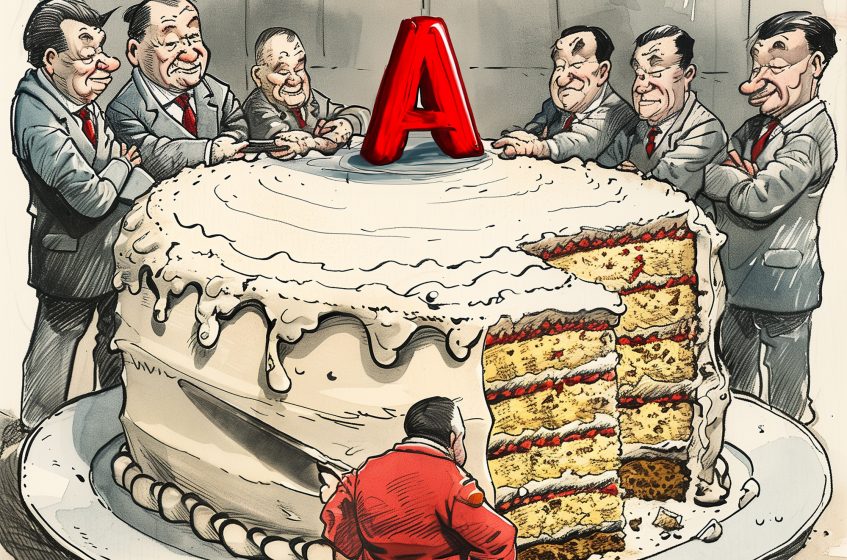
Regulations and Taxation of A-share Market Cash Dividends
Further to our discussion in this column last week regarding cash dividend distribution among A-Share listed companies and the growing trend in recent years, below is a review of the background factors and related taxation issues.
In view of the general apathy among A-share companies towards distributing cash dividends in general, the China Securities Regulatory Commission (CSRC) has, over the years, introduced various regulations to guide, encourage, and require listed companies to pay dividends. The “Measures for the Administration of the Listed Company Issuing New Shares” were promulgated in 2001 to mandate companies issuing new shares to provide an explanation if they have not declared dividends within the past three years. Released in 2004, the “Provisions on Strengthening the Protection of the Rights and Interests of the General Public Shareholders” specifically prohibit listed companies that failed to distribute profits in cash in the last three years from issuing additional shares and convertible bonds and from allotting shares to the company’s existing shareholders. Aimed at suitably protecting the interests of small and medium investors, this marks the CSRC’s first mandatory requirement for listed companies to pay dividends.
Announced in 2006, the “Administrative Measures for the Issuance of Securities by Listed Companies” stipulate for the first time that the profits accumulatively distributed in cash or stocks should not be less than 20% of the average annual distributable profits realized within the last three years. The “Decision on the Revision of Several Regulations Regarding Cash Dividends” promulgated in 2008 makes cash dividend distribution mandatory and raises the percentage to 30%.
Measures for cash dividends released by the CSRC in 2012, 2013, 2015, and 2022 underline the prescriptive nature of dividend distribution and are thus conducive to promoting this practice. Promulgated in 2013, the “Guideline No. 3 on the Supervision and Administration of Listed Companies ― Cash Dividend Distribution of Listed Companies” (hereinafter “Cash-Dividend Distribution Guideline”) makes it mandatory, for the first time, for independent board members to put forward their independent views on cash dividends. Besides, securities regulators are required to pay special attention to any irregularities about a company’s cash dividend distribution, e.g. withholding such distribution in spite of readily available funds or substantial dividends, or cash dividend payouts excluded in the company’s Articles of Association. The Guideline enables the board of a listed company to implement a differentiated cash-dividend-distribution policy based on comprehensive considerations of such factors as the company’s industry characteristics, development stage, its business model, profitability, and any arrangements for major capital expenditure.
.If the company is at a mature stage of development and has no arrangements for major capital expenditure – the proportion of cash dividends (i.e. cash dividends divided by the sum of cash dividends and stock dividends) should account for at least 80% of the profits distributed in the corresponding period;
.If the company is at a mature stage of development but has arrangements for major capital expenditure – the proportion of cash dividends should account for at least 40% of the profits distributed in the corresponding period;
.If the company is at a growing stage of development and has arrangements for major capital expenditure, the proportion of cash dividends should account for at least 20% of the profits distributed in the corresponding period;
.If it is difficult to identify the company’s development stage and the company has arrangements for major capital expenditure, then the provisions in the foregoing paragraph shall apply.
The “Notice on Encouraging Mergers, Acquisitions, and Restructuring, Cash Dividends, and Share Repurchase of Listed Companies” rolled out in 2015 encourages, for the first time, listed companies to distribute interim dividends. The 2002 Cash Dividend Distribution Guideline requires the issuer and sponsoring organization to give a reasonable explanation if the cash dividends paid by their listed company are low.
The latest Cash-Dividend Distribution Guideline revised in 2023 mandates that companies prioritize cash payouts as a form of profit distribution and incorporate a cash-dividend distribution policy into their Articles of Association. The proportion of cash dividends in the distributed profits for the corresponding period, as specified in the 2013 Cash-Dividend Distribution Guideline, still applies. In accordance with the Guideline, listed companies are required to disclose the reasons behind their failure to pay dividends. Apart from providing specific reasons for low cash dividends, companies must also disclose their improvement measures to be taken to boost investor returns. This approach aims to urge companies with high capital investment but low dividend payouts to lift their cash dividends. The Guideline also stipulates that, when reviewing the annual profit distribution plan at their annual shareholders’ meetings, listed companies can deliberate and approve the conditions, maximum ratios, maximum amounts, etc. for cash dividends in the following interim period. This facilitates the establishment of the practice of distributing interim dividends and increases the frequency of cash payouts. In addition, the Guideline no longer requires independent board members to provide their individual views, thereby streamlining the company’s internal process of cash-dividend distribution.
Issued in April 2024, the “Guideline in Promoting the High-quality Development of the Capital Markets, Strengthening Regulation, and Forestalling Risks” demands tightening the regulation of cash dividends on the part of listed companies. It requires limiting major shareholders’ reduction of share capital and issuing special-treatment risk alerts for companies that have not distributed dividends or have maintained low dividend ratios for an extended period. The regulation of cash dividend distribution is thus escalated once again.
All in all, the CSRC has been paying increasing attention to and strengthening the regulation of cash dividend distribution of A-Share companies. Such a degree of attention and requirement is rare among regulators worldwide, testifying to the regulator’s effort and determination to protect the interests of public shareholders. As of May 2024, the number of retail investors in the A-Share market stood at 220 million (see 【Note】). It helps to prevent listed companies from using listing as a means of profiteering. Cash-dividend policy has become a matter calling for serious attention for most listed companies.
Different dividend tax rates for different markets
It is noteworthy that different rates of profit tax apply to different investors in the A-Share market and the Hong Kong stock market and to dividends derived from different investment methods. For retail investors holding accounts at the Shanghai and Shenzhen stock exchanges, the tax rate on cash dividends is determined by the length of shareholding, e.g. at a rate of 20% for shareholdings less than one month long and at a rate of 10% for shareholdings between one month and less than a year. Those with shareholdings exceeding one year are exempted from tax on the dividends received.
Investors who invest in stocks (H shares and non-H shares) listed in Hong Kong via the Southbound Stock Connect are subject to a 20% income tax on cash dividends received. Investors with a Hong Kong Stock Exchange account are subject to a 10% income tax for dividends earned from A-Share stocks via the Shanghai-Hong Kong Stock Connect or the Shenzhen-Hong Kong Stock Connect. Currently, the treatment of dividend income varies among A-Share and Hong Kong market investors. Mainland investors face a higher dividend income tax when investing in H shares via the Southbound Stock Connect. The advantage of a higher pre-tax dividend yield due to the lower valuation of H shares issued by Mainland companies in the Hong Kong stock market is thus substantially offset. This scenario is not conducive to northbound inflows of funds to the Hong Kong stock market.
Different investors and the same investor using various methods to invest in a company’s stock are subject to different dividend tax rates. This not only influences the investors’ evaluation of dividend yields but may also affect the cash-dividend distribution policies of companies that are simultaneously listed on the A-Share market and the Hong Kong stock market.
Proposed improvements to taxation policy
Based on the above taxation analysis, we believe that it behoves regulators to adjust related tax policies in order to minimize or eliminate tax inequality, i.e. different tax rates levied on local and cross-border investors due to different investment account locations and different investment methods.
As it stands, protecting investors’ interests by guiding listed companies to distribute cash dividends through the CSRC’s regulatory requirements is doing more good than harm. In the long run, the decision to whether or not distribute cash dividends and to determine dividend payout ratios should be left in the hands of the listed companies, subject to approval by shareholders’ meetings. When the opportunity is ripe, regulators could consider relaxing or scrapping the dividend-distribution requirement for young innovation and technology companies that have research and development (R&D) expenditure reaching a certain proportion and have less cash holdings. This will serve to facilitate effort by promising companies to build up sufficient funds so that their market competitiveness can be maintained through R&D input and capital investment.
Note: https://www.news.cn/mrdx/2024-01/25/c_1310761978.htm
Professor Hong Zou
Professor of Economics
Mr Zike Shen
Masters Students at HKUBS
(This article was also published on July 3, 2024 in the “Lung Fu Shan” column of the Hong Kong Economic Journal)







